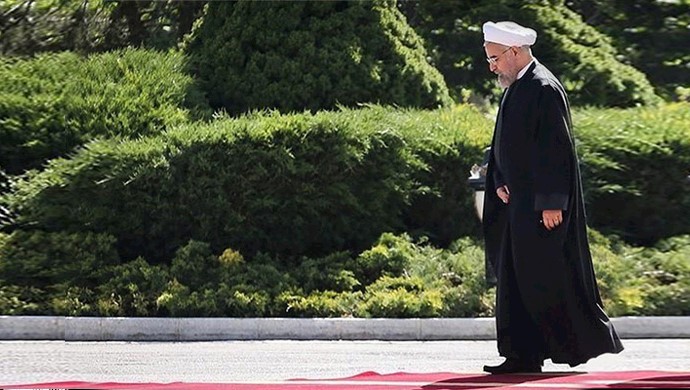Analysis by PMOI/MEK
Iran, January 24, 2020—The U.S. Treasury slapped fresh sanctions against the Iranian regime’s petrochemical sector on Thursday, blacklisting two individuals and six companies that were doing business with Tehran. Four of these companies, including two companies based in Hong Kong, one in Shanghai and one in Dubai, had been involved in a scheme to help the state-owned National Iranian Oil Company (NIOC) to circumvent U.S. sanctions and export millions of dollars’ worth of goods.
The Treasury described NIOC as “an entity instrumental in Iran’s petroleum and petrochemical industries, which helps to finance Iran’s Islamic Revolutionary Guard Corps-Qods Force (IRGC-QF) and its terrorist proxies.”
“Iran’s petrochemical and petroleum sectors are primary sources of funding for the Iranian regime’s global terrorist activities and enable its persistent use of violence against its own people,” said Treasury Secretary Steven T. Mnuchin.
The sanctions come against the backdrop of a toughening stance by U.S. officials toward the Iranian regime. Secretary of State Mike Pompeo described the Iranian regime as the main source of instability in the Middle East and reiterated that Tehran is trying to carry out terror plots in the U.S. and Europe.
Brian Hook, the U.S. special representative for Iran, warned the Iranian regime that if it continues to attack U.S. troops and citizens, the new commander of its terrorist Quds Force will share the fate of the former, Qassem Soleimani, who was killed in a U.S. drone raid in early January. “If [Esmaeil] Ghaani follows the same path of killing Americans then he will meet the same fate,” Hook told the Arabic-language daily Asharq al-Awsat.

Esmaeil Ghaani (right) former deputy Qods commander sitting next to Qasem Soleimani
While the Iranian regime usually makes open threats to target U.S. bases and troops, this time, its response was very cautious. The spokesperson of the regime’s foreign ministry tried to play the part of the victim, calling Hook’s remarks “unveiling the targeted terrorism of the U.S. government.” The Revolutionary Guards and the Quds Force have also been very silent on the issue. Fars News Agency, which is owned by the IRGC, only reported the Hook’s comments and feigned surprise that a government is so openly speaking of killing “officials” of another country as if it has forgotten that its own regime has been doing so for four decades.
The regime’s weak response shows that firm response and policy is just what it needs.
The mullahs only speak the language of force
Just two days ago, a member of the Iranian regime’s Majlis (parliament) declared a $3 million bounty for the assassination of U.S. President Donald Trump. A few days earlier, Ahmad Alamalhoda, the representative of regime supreme leader Ali Khamenei, called for the mutilation of the UK Ambassador to Tehran.
For four decades, the international community has been trying to deal with the Iranian regime through appeasement and concessions. But finally, there are signs that the West is understanding that the mullahs ruling in Tehran only understand the language of firmness and force.
In a session at the European Parliament, Saudi Arabia’s Minister of State for Foreign Affairs Adel al-Jubeir reiterated that while Saudi Arabia had extended its hand to Iran since 1979, it has seen nothing “but death and destruction [from Iran].”
“[The Iranian regime] does not believe in the principle of non-interference. They are the largest sponsor of terrorism in the world, that’s why we have a problem with Iran,” said al-Jubeir in front of the European Parliament. He added that “pressure needs to be continued on Iran” so that it changes its behavior in the region.
While the international community had plenty of opportunities to change course during the past 40 years, there’s a clear reason it is happening now. The 2018 nationwide protests, the continuation of demonstrations since, and the latest round of uprisings in November 2019 have sent a clear message to the world: The Iranian people do not want this regime and they are united in overthrowing the rule of the mullahs.
Moreover, parallel protests in Iraq and Lebanon, which have been ongoing for several months, share a common theme: Exasperation and outrage at the continued meddling of the Iranian regime in the affairs of its neighboring countries. The peoples of these nations want the terrorist proxies of the Iranian regime out of their homes.
In this regard, the elimination of Soleimani, who was the second-most powerful person in Iran and the main implementor of the Iranian regime’s terrorist agendas in the region, dealt a heavy blow to the regime’s terror apparatus, to the chagrin of the mullahs and the joy of the people of Iraq, Syria, and Lebanon.
Arman, a state-run news website, wrote on Thursday, “It is clear that there are plans to isolate Iran and the continuation of this process will result in tougher conditions [for the regime]… It’s not clear how far this process will go.”
Final thoughts
The regime’s outdated structure and inhuman nature is the basis of its isolation and the key factor that puts it at odds with universal values and norms. But it is the strong will of the Iranian people and their resistance movement and their determination and persistence in challenging the tyrannical rule of this regime that has finally pushed the international community to recognize the evil nature of this regime and stand up against it. Had it not been for the price paid by the Iranian people and the Resistance, the appeasement policy would have still been dominant today, and the mullahs would have been able to extend their rule by stepping on the rights and blood of the Iranian people.





